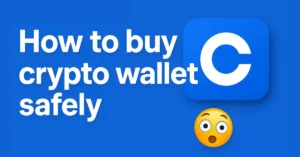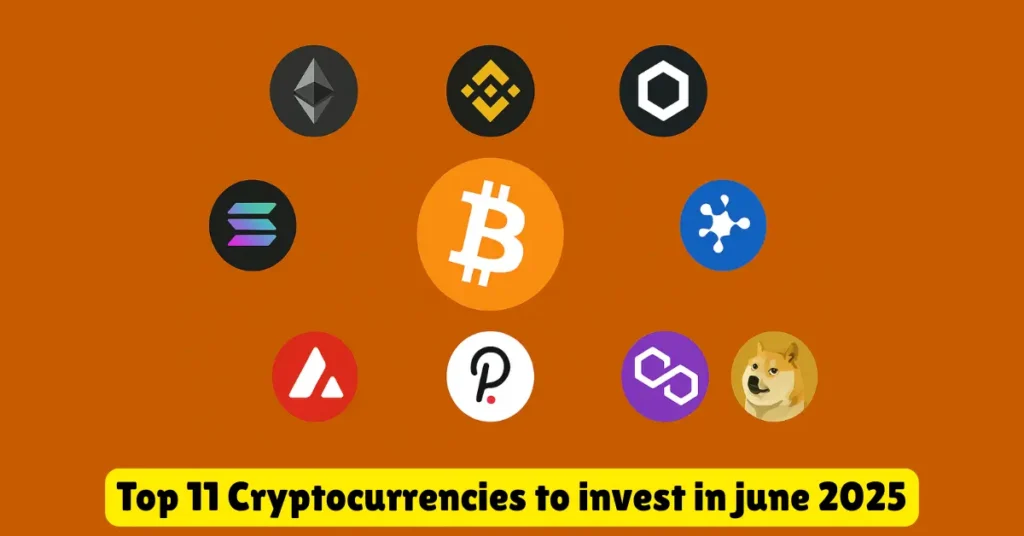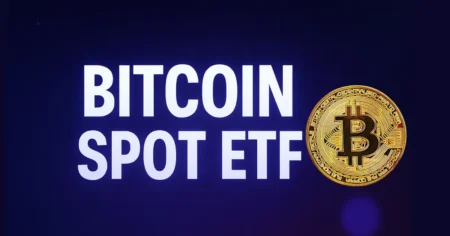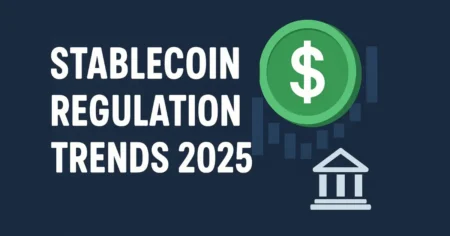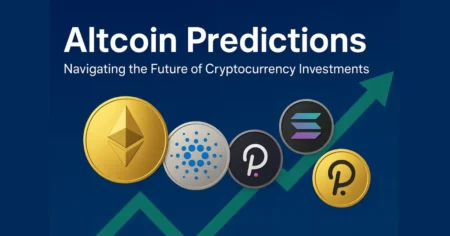Top 11 Cryptocurrencies to invest
Disclaimer: Crypto is highly volatile; do your own research. Princes are based on live snapshots as of June 2025.
1. Bitcoin (BTC) – The Foundation of the Crypto Ecosystem
Introduction
Bitcoin is the first and most well-known cryptocurrency, introduced in 2009 by the pseudonymous creator Satoshi Nakamoto. It was designed as a peer-to-peer digital currency that eliminates the need for intermediaries such as banks or governments. Over the years, Bitcoin has evolved from an experimental project to a globally recognized financial asset, often referred to as “digital gold.”
How It Works
Bitcoin operates on a decentralized ledger known as the blockchain. This public, immutable database records every transaction ever made on the network. It uses a consensus mechanism called Proof of Work (PoW) where miners solve complex mathematical problems to validate transactions and secure the network.
Supply and Tokenomics
Bitcoin has a hard-capped supply of 21 million coins, making it inherently deflationary. Approximately 19.7 million BTC have already been mined, with the remaining supply gradually released through a halving process that occurs every four years. The most recent halving occurred in 2024, reducing the block reward from 6.25 BTC to 3.125 BTC. This controlled emission rate adds scarcity and makes Bitcoin attractive as a long-term store of value.
Institutional Interest and Adoption
In recent years, institutional adoption has accelerated. Companies like MicroStrategy, Tesla, and various hedge funds have added Bitcoin to their balance sheets. In some countries, like El Salvador, Bitcoin has even achieved legal tender status. Furthermore, the approval of spot Bitcoin ETFs in multiple regions has made it easier for traditional investors to gain exposure to Bitcoin without directly buying and storing it.
Technological Developments
Despite being considered slow compared to newer blockchains, Bitcoin has evolved significantly through layer-2 solutions. The Lightning Network is a key development that enables near-instant and low-cost microtransactions, expanding Bitcoin’s use case beyond just being a store of value. Upgrades like Taproot have also enhanced privacy and smart contract functionality.
Use Cases
Bitcoin is primarily used as:
- A hedge against inflation
- A medium of exchange in countries with unstable fiat currencies
- A long-term investment asset
- A payment method in select online and retail platforms
Risks and Challenges
While Bitcoin is often seen as a secure and robust system, it faces several challenges:
- High energy consumption due to PoW mining
- Regulatory scrutiny, especially in developed nations
- Price volatility which can affect its use as a stable medium of exchange
- Scalability limitations (partially addressed by Lightning Network)
Outlook for 2025 and Beyond
As more financial institutions offer Bitcoin-based products and geopolitical uncertainty pushes investors toward decentralized assets, Bitcoin’s relevance is expected to grow. Layer-2 innovations and increasing mainstream education around blockchain could position Bitcoin as both a reliable digital asset and a transactional currency in the years ahead.
Trade Bitcoin on ZebPay:
2. Ethereum (ETH) – The Leading Smart Contract Platform
Introduction
Ethereum, launched in 2015 by Vitalik Buterin and a team of developers, is a decentralized platform designed to enable smart contracts and decentralized applications (dApps). Unlike Bitcoin, which primarily functions as digital gold, Ethereum provides a programmable blockchain that supports a wide range of use cases from finance to gaming and supply chain management.
How It Works
Ethereum operates on a blockchain similar to Bitcoin but with a crucial difference: it supports Turing-complete smart contracts, which are self-executing contracts with the terms directly written into code. These smart contracts run on the Ethereum Virtual Machine (EVM), allowing developers to create complex decentralized applications without relying on centralized servers.
In September 2022, Ethereum transitioned from a Proof-of-Work (PoW) consensus mechanism to Proof-of-Stake (PoS) through an upgrade known as “The Merge.” This change drastically reduced Ethereum’s energy consumption by over 99%, improving its sustainability.
Supply and Tokenomics
Ethereum’s supply is not capped like Bitcoin’s, but it has implemented mechanisms to manage inflation. Since the introduction of EIP-1559 in 2021, a portion of transaction fees (base fees) are burned, effectively reducing the circulating supply. Additionally, with PoS staking, validators lock up ETH as collateral to secure the network and earn rewards, further influencing supply dynamics.
As of 2025, Ethereum’s circulating supply is approximately 120 million ETH, with inflation rates kept relatively low due to these burn and staking mechanisms.
Use Cases and Ecosystem
Ethereum is the foundation for a massive ecosystem including:
- Decentralized Finance (DeFi): Lending, borrowing, decentralized exchanges, and stablecoins
- Non-Fungible Tokens (NFTs): Digital art, collectibles, and gaming assets
- Decentralized Autonomous Organizations (DAOs): Community-governed projects and investment groups
- Real-World Asset Tokenization: Representing physical assets like real estate or commodities on-chain
Technological Upgrades
Ethereum continues to evolve with major upgrades planned and underway:
- Shard Chains: To increase scalability by splitting the blockchain into multiple parts
- Layer-2 Solutions: Roll-ups like Optimism and Arbitrum enable faster and cheaper transactions
- Dencun Upgrade: Expected to improve data availability and further reduce fees
Risks and Challenges
Despite its dominance, Ethereum faces some challenges:
- Network congestion and high gas fees during peak usage
- Competition from newer blockchains with higher throughput and lower fees
- Regulatory scrutiny on DeFi projects running on Ethereum
- Complexity of ongoing upgrades and potential delays
Outlook for 2025 and Beyond
Ethereum’s move to Proof-of-Stake and focus on scalability solutions position it strongly for mass adoption. As Layer-2 solutions mature and shard chains roll out, Ethereum aims to support millions of users and applications efficiently. Continued institutional interest and enterprise adoption also signal sustained growth potential.
Trade Ethereum on ZebPay:
3. Binance Coin (BNB) – The Heart of Binance Ecosystem
Introduction
Binance Coin (BNB) is the native cryptocurrency of the Binance ecosystem, one of the world’s largest and most popular cryptocurrency exchanges. Launched in 2017, BNB was initially created as an ERC-20 token on Ethereum but later migrated to Binance’s own blockchain, the Binance Chain, and its smart contract platform, Binance Smart Chain (BSC).
How It Works
BNB functions as the primary utility token within the Binance ecosystem. It powers the Binance Chain and Binance Smart Chain networks, facilitating fast and low-cost transactions. Binance Smart Chain, known for its high performance and compatibility with the Ethereum Virtual Machine (EVM), supports thousands of decentralized applications (dApps), decentralized finance (DeFi) projects, and NFTs.
Supply and Tokenomics
BNB has a maximum supply capped at 200 million tokens. Binance regularly conducts quarterly token burns, permanently removing a portion of BNB from circulation based on the trading volume on the Binance exchange. This deflationary mechanism reduces supply over time, aiming to increase scarcity and value.
Use Cases
BNB offers a wide range of utility within the Binance ecosystem, including:
- Paying for trading fees on Binance exchange with discounts
- Participating in token sales on Binance Launchpad
- Paying transaction fees on Binance Smart Chain
- Using in various dApps for payments, staking, and governance
Technological Advantages
Binance Smart Chain operates on a Proof-of-Stake Authority (PoSA) consensus mechanism, combining delegated staking and authority nodes to achieve fast block times (approximately 3 seconds) and high throughput. This design allows BSC to process over 100 transactions per second, making it an attractive platform for DeFi and NFT projects.
Recent upgrades and the introduction of the opBNB layer-2 rollup promise even better scalability and reduced transaction costs, further strengthening BNB’s ecosystem.
Risks and Considerations
Despite its strong market position, BNB faces challenges such as:
- Regulatory pressures on Binance exchange globally
- Centralization concerns due to Binance’s significant control over the chain
- Competition from other smart contract platforms
Outlook for 2025 and Beyond
With continuous ecosystem expansion, improved scalability solutions, and increasing adoption of Binance Smart Chain, BNB is well-positioned to remain a key player in the crypto space. Its strong integration with Binance’s products and services ensures ongoing demand for the token.
Trade Binance Coin on ZebPay:
4. Solana (SOL) – The High-Speed Blockchain for Scalable Applications
Introduction
Solana is a high-performance blockchain launched in 2020 by Anatoly Yakovenko and his team. It aims to solve the scalability and speed limitations faced by many earlier blockchains, making it a popular choice for developers building decentralized applications, DeFi platforms, and NFTs that require fast and low-cost transactions.
How It Works
Solana uses a unique combination of consensus mechanisms called Proof of History (PoH) paired with Proof of Stake (PoS). Proof of History is a cryptographic clock that timestamps transactions before they are added to the blockchain, enabling extremely fast processing speeds and high throughput.
This architecture allows Solana to process over 50,000 transactions per second with average confirmation times of under one second and minimal fees, far surpassing many competing blockchains.
Supply and Tokenomics
Solana’s native token, SOL, has a maximum supply of 511 million tokens. SOL is used to pay transaction fees on the network, participate in staking, and secure the network via the PoS consensus mechanism. Validators and delegators earn rewards in SOL for helping maintain network security and performance.
Ecosystem and Use Cases
Solana supports a broad ecosystem, including:
- Decentralized Finance (DeFi): Lending, borrowing, decentralized exchanges, and yield farming
- NFT Marketplaces: High-speed minting and trading of digital collectibles
- Web3 Applications: Gaming, social platforms, and decentralized identity solutions
The network’s speed and low fees have attracted many projects, from major DeFi protocols to innovative new platforms seeking scalability without sacrificing decentralization.
Technological Developments
Solana continues to focus on improving network reliability and scalability. Initiatives include:
- Enhancing validator performance and decentralization
- Integrating cross-chain bridges for interoperability with Ethereum and other blockchains
- Developing layer-2 solutions to further reduce fees and increase throughput
Risks and Challenges
Despite its advantages, Solana faces some issues:
- Occasional network outages due to overload or bugs
- Centralization concerns with a relatively small number of validators
- Growing competition from other layer-1 blockchains with strong developer communities
Outlook for 2025 and Beyond
With ongoing improvements in infrastructure and growing developer interest, Solana is poised to remain a top choice for scalable blockchain applications. Its combination of speed, cost efficiency, and expanding ecosystem makes it attractive for users and developers alike.
Trade Solana on ZebPay:
5. Cardano (ADA) – The Research-Driven Blockchain Platform
Introduction
Cardano is a third-generation blockchain platform launched in 2017 by Charles Hoskinson, one of Ethereum’s co-founders. It distinguishes itself through a strong emphasis on scientific research, formal methods, and peer-reviewed academic work. Cardano aims to provide a secure, scalable, and sustainable platform for smart contracts and decentralized applications, with a focus on real-world use cases and regulatory compliance.
How It Works
Cardano uses a unique Proof-of-Stake consensus protocol called Ouroboros, which is designed to be energy-efficient and highly secure. Ouroboros divides time into epochs and slots, randomly electing slot leaders responsible for adding blocks to the chain, ensuring decentralization and fairness.
The platform’s layered architecture separates the Cardano Settlement Layer (CSL), which handles ADA transactions, from the Cardano Computation Layer (CCL), which supports smart contracts and decentralized apps. This modular design enhances flexibility and scalability.
Supply and Tokenomics
ADA, the native token of Cardano, has a maximum supply capped at 45 billion tokens. It is used for transaction fees, staking, and governance. ADA holders can delegate their tokens to stake pools and earn rewards, incentivizing network participation and security.
Ecosystem and Use Cases
Cardano supports a growing ecosystem, including:
- Smart contracts for DeFi applications
- NFT marketplaces and digital collectibles
- Identity solutions for governance and education
- Supply chain tracking and healthcare applications
Cardano’s emphasis on partnerships with governments and institutions in developing countries showcases its focus on practical, large-scale adoption.
Technological Developments
Cardano is continuously evolving with upgrades such as:
- Alonzo Hard Fork: Introduced smart contract functionality in 2021
- Hydra Layer-2 Solution: Designed to improve scalability by enabling thousands of transactions per second off-chain
Ongoing research into interoperability and sidechains to connect Cardano with other blockchains
Risks and Challenges
Challenges facing Cardano include:
- Slower development pace due to its research-first approach
- Competition from faster-moving smart contract platforms
- Reliance on adoption of its unique approach to gain market share
Outlook for 2025 and Beyond
Cardano’s solid foundation, strong academic backing, and commitment to sustainability position it as a promising platform for large-scale decentralized applications. Its partnerships and continued technological improvements suggest steady growth potential in the coming years.
Trade Cardano on ZebPay:
6. Chainlink (LINK) – The Decentralized Oracle Network
Introduction
Chainlink is a decentralized oracle network launched in 2017 that aims to bridge the gap between smart contracts and real-world data. While blockchains are secure and transparent, they cannot access data outside their own network. Chainlink solves this problem by providing reliable, tamper-proof data feeds that smart contracts can trust, enabling a wide range of real-world applications.
How It Works
Chainlink operates through a network of decentralized oracle nodes that fetch and verify external data such as price feeds, weather information, and event outcomes. These oracles then deliver the data to smart contracts on various blockchains, ensuring the information is accurate and resistant to manipulation.
LINK is the native utility token used to pay oracle operators for their services and to incentivize reliable performance.
Use Cases
Chainlink is essential for many DeFi applications that require accurate price data for lending, borrowing, derivatives, and stablecoins. It also supports insurance, gaming, and supply chain projects that depend on verified external data.
Tokenomics
LINK has a fixed supply of 1 billion tokens. The token’s demand is driven by its necessity within the oracle network, as users pay for data services and node operators stake LINK to guarantee data quality.
Technological Developments
Chainlink continues to expand its network with innovations like:
- Cross-chain interoperability protocols to connect multiple blockchains
- Verifiable randomness functions (VRF) for gaming and lotteries
- Off-chain reporting to improve scalability and reduce costs
Risks and Challenges
Chainlink’s success depends on the adoption of smart contracts requiring reliable data. Competition from other oracle providers and scalability concerns remain challenges.
Outlook for 2025 and Beyond
As decentralized applications grow more complex, the need for secure, decentralized oracles like Chainlink will increase. Its pioneering role and expanding technology suite position LINK as a critical infrastructure token in the crypto ecosystem.
Trade Chainlink on ZebPay:
7. Ripple (XRP) – Revolutionizing Cross-Border Payments
Introduction
Ripple is both a digital payment protocol and a cryptocurrency (XRP) designed to enable fast, low-cost cross-border money transfers. Launched in 2012 by Ripple Labs, the platform aims to improve the efficiency of international payments, which traditionally rely on slow and expensive banking networks.
How It Works
Ripple’s technology focuses on providing liquidity and settlement solutions to banks and payment providers. Unlike many cryptocurrencies that rely on mining, XRP operates on a consensus ledger maintained by a network of independent validators. This consensus mechanism enables transaction confirmation in 3-5 seconds with minimal fees.
RippleNet, the payment network built on Ripple’s technology, connects financial institutions worldwide, allowing them to transact seamlessly with end-to-end visibility and transparency.
Supply and Tokenomics
XRP has a maximum supply of 100 billion tokens, with around 50 billion currently in circulation. The majority of XRP tokens are held by Ripple Labs and released periodically. XRP is used as a bridge currency to facilitate liquidity in cross-border payments, reducing the need for pre-funded accounts in different currencies.
Use Cases
Ripple’s primary use cases include:
- Cross-border remittances: Enabling individuals to send money internationally quickly and cheaply
- Liquidity on Demand: Helping banks source liquidity during transactions without holding large reserves of foreign currency
- Payment settlements: Reducing settlement times from days to seconds for international transfers
Technological Advantages
Ripple’s unique consensus algorithm allows for high-speed transaction processing with low energy consumption compared to Proof-of-Work blockchains. Its partnerships with hundreds of financial institutions globally demonstrate its growing acceptance.
Risks and Challenges
Ripple faces significant challenges, including:
- Ongoing legal battles, particularly the lawsuit with the U.S. Securities and Exchange Commission (SEC)
- Regulatory uncertainty in various jurisdictions
- Competition from traditional financial systems and newer blockchain projects
Outlook for 2025 and Beyond
If Ripple successfully navigates legal challenges and continues expanding its partnerships, XRP has strong potential to disrupt the traditional banking system by providing a faster and cheaper alternative for cross-border payments. The growing demand for efficient international money transfers positions XRP well for future growth.
Trade Ripple (XRP) on ZebPay:
8. Avalanche (AVAX) – The Ultra-Fast and Scalable Blockchain Platform
Introduction
Avalanche, launched in 2020 by Ava Labs, is a high-performance blockchain platform designed for decentralized applications (dApps) and enterprise blockchain deployments. It aims to deliver near-instant transaction finality, high throughput, and interoperability, making it a strong competitor in the smart contract space.
How It Works
Avalanche utilizes a novel consensus protocol called Avalanche consensus, which is a type of Proof-of-Stake (PoS) mechanism. Unlike traditional PoS or Proof-of-Work (PoW) models, Avalanche’s consensus allows thousands of validators to operate simultaneously, enabling high scalability and security.
Avalanche also employs a unique three-blockchain architecture:
- X-Chain: Handles asset creation and transfers
- C-Chain: Supports smart contracts and is compatible with Ethereum’s Virtual Machine (EVM)
- P-Chain: Manages network metadata and validator coordination
This modular setup enhances flexibility and performance.
Supply and Tokenomics
AVAX is Avalanche’s native token, capped at 720 million tokens. It is used for paying transaction fees, staking by validators, and participating in governance decisions. Token holders who stake AVAX help secure the network and earn rewards, incentivizing network participation.
Use Cases and Ecosystem
Avalanche supports a growing ecosystem including:
- DeFi platforms such as lending, borrowing, and decentralized exchanges
- NFT marketplaces and gaming applications
- Enterprise blockchain solutions
- Cross-chain asset transfers due to its interoperability focus
Its Ethereum compatibility enables developers to easily migrate or deploy smart contracts, broadening its adoption.
Technological Developments
Avalanche continues to innovate by improving scalability, reducing fees, and enhancing cross-chain functionality. Upgrades focus on expanding subnet capabilities, allowing custom blockchains tailored to specific use cases.
Risks and Challenges
While Avalanche is gaining popularity, it faces challenges like:
- Competition from other layer-1 blockchains (Ethereum, Solana, etc.)
- Network complexity that might hinder mainstream developer adoption
- Regulatory uncertainties impacting DeFi projects on its platform
Outlook for 2025 and Beyond
Avalanche’s speed, scalability, and interoperability make it a promising platform for the future of decentralized finance and enterprise applications. Its growing developer community and continuous upgrades are key drivers of its long-term potential.
Trade Avalanche on ZebPay:
9. Polkadot (DOT) – The Blockchain of Blockchains
Introduction
Polkadot is a next-generation blockchain platform created by Dr. Gavin Wood, co-founder of Ethereum. Launched in 2020 by the Web3 Foundation, Polkadot aims to enable a fully decentralized web by facilitating interoperability between multiple specialized blockchains, often called parachains.
How It Works
- Polkadot’s architecture revolves around a central relay chain that coordinates consensus and communication between connected parachains. Each parachain is a customized blockchain optimized for specific use cases, such as DeFi, gaming, or privacy.
- Polkadot uses a Nominated Proof-of-Stake (NPoS) consensus mechanism, where DOT holders nominate validators who secure the network. This system enhances security, scalability, and governance.
Supply and Tokenomics
DOT is Polkadot’s native token, with a current circulating supply of around 1 billion tokens and an inflationary model to incentivize staking and network security. DOT serves multiple purposes: governance voting, staking, and bonding tokens to connect parachains.
Use Cases and Ecosystem
Polkadot enables diverse applications through its interoperable parachains, including:
- Cross-chain DeFi protocols
- Decentralized identity and privacy solutions
- NFT platforms and gaming
- Enterprise blockchain deployments
- Its flexible framework encourages innovation across industries.
Technological Developments
Key developments in Polkadot’s roadmap include:
- Launching more parachains via auctions and crowdloans
- Enhancing cross-chain messaging protocols (XCMP) for seamless data transfer
- Upgrades to improve scalability and decentralization
Risks and Challenges
Polkadot faces competition from other interoperability-focused projects like Cosmos. The complexity of parachain auctions and deployment may also slow adoption. Regulatory challenges around governance tokens could impact growth.
Outlook for 2025 and Beyond
Polkadot’s vision of a connected blockchain ecosystem positions it well for future expansion in Web3 applications. As parachains grow and interoperability improves, DOT could become a cornerstone of decentralized internet infrastructure.
Trade Polkadot on ZebPay:
10. Polygon (MATIC) – Scaling Ethereum for Mass Adoption
Introduction
Polygon, formerly known as Matic Network, is a Layer-2 scaling solution for Ethereum that aims to improve transaction speeds and reduce costs. Launched in 2017, Polygon provides a framework for building and connecting Ethereum-compatible blockchain networks, enabling faster and cheaper decentralized applications (dApps).
How It Works
Polygon uses a combination of technologies, primarily Plasma chains and a Proof-of-Stake (PoS) sidechain, to process transactions off the Ethereum mainnet. This allows for high throughput and quick finality while maintaining the security of Ethereum through checkpoints on the main chain.
Its modular architecture supports multiple scaling solutions, including optimistic rollups, zk-rollups, and sidechains, making it versatile for different project needs.
Supply and Tokenomics
MATIC is Polygon’s native token, with a total supply capped at 10 billion tokens. It is used for paying transaction fees, staking by validators to secure the network, and governance participation. Stakers earn rewards in MATIC, incentivizing active network participation.
Use Cases and Ecosystem
Polygon supports a vast ecosystem of dApps spanning:
- DeFi protocols such as decentralized exchanges, lending platforms, and yield farming
- NFT marketplaces and gaming projects
- Enterprise blockchain solutions requiring scalable and cost-effective infrastructure
Polygon’s compatibility with Ethereum tools and wallets makes it easy for developers and users to adopt.
Technological Developments
Polygon continuously enhances its network with:
- Introduction of zk-rollups and optimistic rollups for increased scalability
- Polygon SDK to facilitate building custom blockchain networks
- Expanding cross-chain bridges for interoperability with other blockchains
Risks and Challenges
Challenges for Polygon include:
- Dependence on Ethereum’s mainnet security
- Competition from other Layer-2 and sidechain solutions
- Regulatory scrutiny of DeFi applications running on its network
Outlook for 2025 and Beyond
Polygon’s role as a leading Ethereum scaling solution positions it for significant growth as Ethereum usage expands. Its flexibility, active development, and large ecosystem make it a key player in the blockchain scaling landscape.
Trade Polygon on ZebPay:
11. Dogecoin (DOGE) – The Popular Meme Cryptocurrency
Introduction
Dogecoin started as a fun, meme-inspired cryptocurrency in 2013, created by Billy Markus and Jackson Palmer. Based on the Shiba Inu dog meme, it quickly gained a passionate community and has become one of the most well-known altcoins in the crypto space. Despite its origins, Dogecoin is widely used for tipping, microtransactions, and charitable donations.
How It Works
Dogecoin is a fork of Litecoin, using a Proof-of-Work (PoW) consensus mechanism with the Scrypt algorithm. It features faster block times (about 1 minute) compared to Bitcoin, allowing quicker transaction confirmations. Dogecoin has an uncapped supply, meaning new coins are continuously mined each year, contributing to its inflationary model.
Supply and Tokenomics
Unlike many cryptocurrencies with fixed supply limits, Dogecoin has no maximum supply. Approximately 5 billion DOGE are added annually through mining rewards, keeping inflation steady but predictable. This model encourages spending and tipping rather than hoarding.
Use Cases and Community
Dogecoin’s primary uses include:
- Tipping and microtransactions: Widely used on social media platforms to reward content creators
- Charity and crowdfunding: The community has organized various charitable efforts and sponsorships
- Everyday transactions: Increasing acceptance by merchants for small payments
- Its strong, enthusiastic community remains a major driver of its popularity.
Technological Developments
Dogecoin’s development is relatively modest compared to other projects but continues to benefit from improvements in mining efficiency and network stability. Recent collaborations with other projects aim to increase usability and integration.
Risks and Challenges
- Inflationary supply may limit long-term value appreciation
- Lack of active development team compared to newer projects
- Highly influenced by social media and celebrity endorsements, which can cause price volatility
Outlook for 2025 and Beyond
Dogecoin’s future depends largely on community support and adoption for real-world use cases. Its status as a “fun” and accessible cryptocurrency ensures ongoing interest, but investors should consider its inflationary nature and limited technical innovation.
Trade Dogecoin on ZebPay:
🔑 Key Takeaways: Top 11 Cryptocurrencies to Invest in June 2025
- Bitcoin (BTC) remains the dominant cryptocurrency, known for its stability and market leadership.
- Ethereum (ETH) is leading the smart contract revolution with continuous upgrades like Ethereum 2.0.
- Binance Coin (BNB) offers strong utility within the Binance ecosystem and is a top-performing exchange token.
- Solana (SOL) provides high-speed, low-cost transactions, ideal for DeFi and NFT platforms.
- Cardano (ADA) focuses on peer-reviewed research and scalability, with promising long-term growth.
- Chainlink (LINK) powers decentralized oracles, crucial for real-world data integration in blockchain.
- Ripple (XRP) is positioned as a fast, cost-effective cross-border payment solution.
- Avalanche (AVAX) stands out with its rapid transaction speeds and eco-friendly consensus mechanism.
- Polkadot (DOT) supports multi-chain interoperability and decentralized internet initiatives.
- Polygon (MATIC) enhances Ethereum’s scalability with low fees and fast confirmations.
- Dogecoin (DOGE) remains popular due to its strong community and increasing use as a payment token.
Also read
- What is a Crypto Wallet and How Does It Work? – Coinsify
- 10 Crypto Terms Every Beginner Must Know – Coinsify
- What is Blockchain Technology – Complete Guide – Coinsify
- How to Buy Crypto Safely in 2025 – Complete Guide – Coinsify
- Bitcoin vs Ethereum: Key Differences Explained – Complete Guide
- Ultimate Blockchain Glossary: Learn Blockchain Terms Easily
- How to Buy Bitcoin Safely (Complete Beginner’s Guide)
- Top 10 Crypto Wallets for Beginners (2025 Edition)
- What is Cryptocurrency? A Beginner-Friendly Guide (2025)


